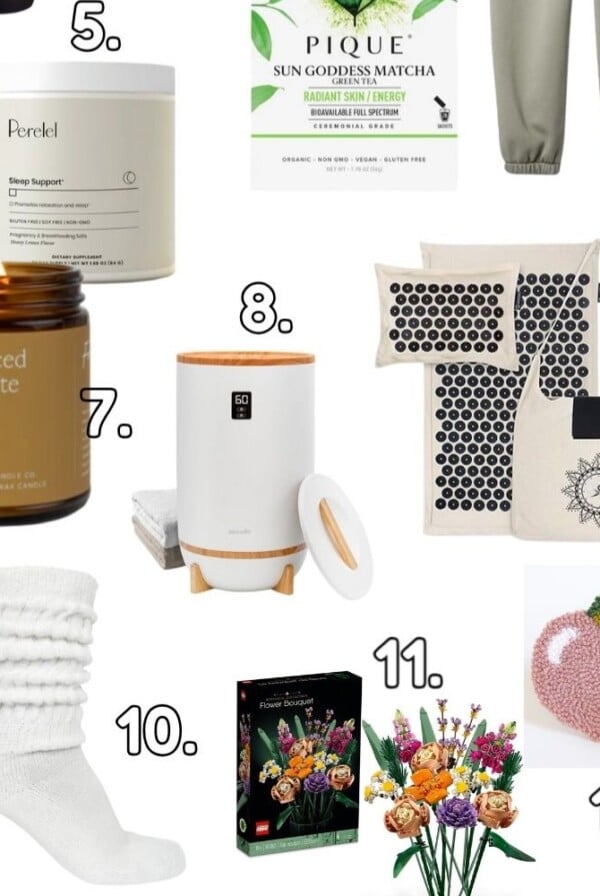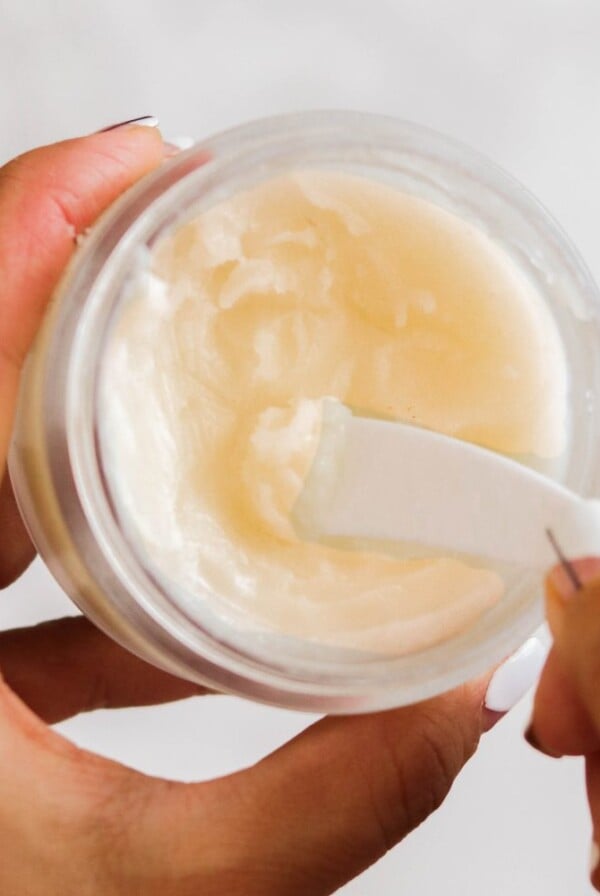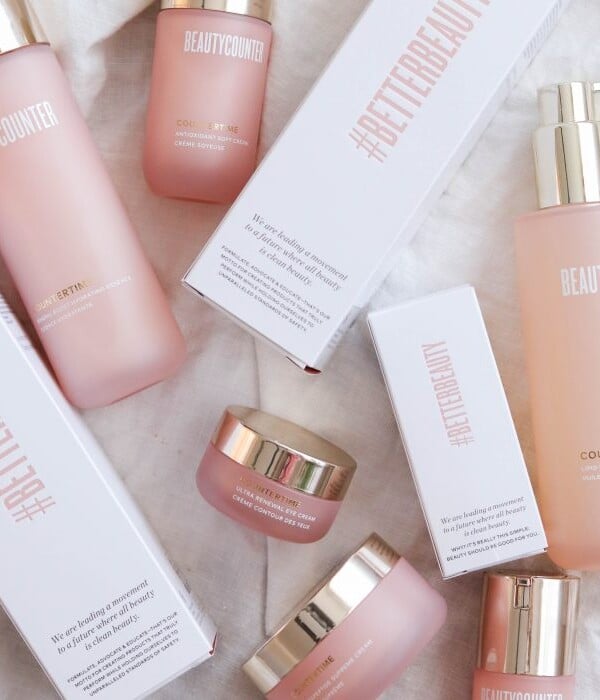This post may contain affiliate links. Please see our disclosure policy.
Learn about the most common toxin 5 ingredients to avoid in sunscreen, and the best safer options on the market!
Want more educational info and updates on discounts, giveaways, and my monthly gifts with purchase? Come join my Safer Skincare private Instagram account and my newsletter!

Sunscreen and sun protection have been a hot topic recently, and it’s becoming more and more confusing for consumers to choose the right kind. When we are out on the beach, the pool, or just spending extended time out in the sun, I highly recommend applying sunscreen that’s good for the planet and your health.
While the sun is not the enemy and vitamin D from sunlight is essential and so beneficial for our health, there IS such a thing as too much of a good thing. This is why I recommend everyone to choose the best kind of products with the safest ingredients for sun protection, if they know that they’re at a risk of getting a sunburn.
Unfortunately, so many chemical sunscreens on the market contain toxic chemicals that contribute to hormonal problems and skin issues. Just like food, it’s so important to read the ingredients of all our skin care and personal care products because they are easily absorbed through the skin, and anything we put on it enters into our bloodstream. So what ingredients should we avoid when it comes to applying sunscreen?

List of Toxic Sunscreen Ingredients
Jump to each section:
1. Chemical Filters
Okay, so I’m grouping several chemicals under 1 ingredient umbrella, but some of the names you’ll see on the labels of chemical sunscreens include: oxybenzone, avobenzone, octisalate, octocrylene, homosalate and octinoxate. All these active ingredients are used to help the sunscreen penetrate in our skin more easily, and even more so when exposed to sunlight. They then accumulate in our bodies, burden our liver, and disrupt our hormones, throwing off our entire endocrine system and causing hormone disruption.
A 2010 study of Swiss mothers by Margaret Schlumpf of the University of Zurich found at least one of these sunscreen chemicals in 85% of milk samples, which shows how much these toxins can be stored in the body and then be exposed to babies! These chemicals may also cause allergic reaction in the body, and produce free radicals that damage our cells and cause cancer.
2. Titanium Dioxide Nanoparticles
The jury is still out for this one, but nanoparticles are tiny particles that absorb the sun’s radiation. These particles are so small that they may be absorbed through the skin and into the bloodstream, causing inflammation in the body. Titanium dioxide is a potential carcinogen, and can cause lung damage when inhaled.
This is a particular concern for me especially with children who regularly put their hands and feet (or anything, really) in their mouths. Also, I’ve accidentally swallowed sunscreen before when I go swimming after applying it on my lips so this pertains to adults as well.
3. Spray Sunscreen
Yes, yes… I know this isn’t really an ingredient. However, I think it’s important to bring up. Spray sunscreen, while being convenient, can easily be inhaled by you and those around you, causing internal harm especially if you are using a chemical based sunscreen. It’s also flammable and can be toxic to the environment. If you read the labels on spray sunscreens, you can read warnings like, “If swallowed, get medical help or contact a Poison Center right away.” So… no thanks.
That being said – the ONLY spray sunscreen I use and recommend is Beautycounter’s Countersun Mineral Sunscreen Mist. It is powered by AIR and is not propellant/aerosol-based so it doesn’t cause harm to our health or the environment! I love this product because it spreads so easily so I feel like I don’t need to use as much, all while only containing squeaky clean products.
4. Retinyl Palmitate or Retinol
These active ingredients are forms of Vitamin A that, while may be a great antioxidant on its own, is harmful when used on skin exposed to sunlight. Many skincare manufacturers add this ingredients to their products because they believe that it has anti-aging benefits. However, when it comes in contact with sunlight, retinyl palmitate may speed up the development of skin lesions and tumors. This is because when exposed to UV rays, these antioxidant compounds break down and produce free radicals that damage our DNA and may lead to skin cancer.
5. Parabens
Parabens are used as preservatives in sunscreens and other personal care products, and can be hard to identify because they have many names on the ingredients list. Here are some alternate names to help you locate them better:
Methylparaben
Ethylparaben
Propylparaben
Butylparaben
Benzyl-parahydroxybenzoate (p-hydroxybenzoate)
Methyl-parahydroxybenzoate (p-hydroxybenzate)
Ethyl-parahydroxybenzoate (p-hydroxybenzoate)
Propyl-parahydroxybenzoate (p-hydroxybenzoate)
Butyl-parahydroxybenzoate (p-hydroxybenzoate)
Parahydroxybenzoate (p-hydroxybenzoate)
There are many reasons to avoid parabens. They cause hormone disruption, they are associated with breast cancer, induce allergic reactions, and interfere with reproductive and developmental health. Parabens are used in many other skin care products, not just sunscreens, so remember to look out for them on all personal care products you use!
So… Which Sunscreens Should I Use?
The safest sunscreens to use are the ones that are formulated with zinc oxide. While chemical sunscreens “absorb” the sun rays and are potentially more dangerous when exposed to UV rays, zinc-based sunscreens physically block the sunlight without the harmful effects. You also want to search for BROAD SPECTRUM coverage – I explain why below under “Is Higher SPF Better?”. You can do your own research to find the best brand, or take a look at Environmental Working Group (EWG)’s top sunscreens that meet their tough safety criteria.
Is Higher SPF Better?
Higher SPF doesn’t mean that it’s necessarily better and will provide better protection.
SPF measures your sunscreen protection from UVB rays, but does NOT measure how well a sunscreen will protect from UVA rays, and both are important.
While UVB rays are what cause physical sunburns, UVA rays penetrate the skin more deeply and are associated with skin aging. They also increase the carcinogenic effects of UVB rays and are increasingly being seen as a cause of skin cancer on their own.
Then there’s also BLUE LIGHT which is another type of ray: The latest research suggests it may damage skin proteins and lipids and cause as much skin aging effects as UVA & UVB (including affecting skin elasticity, wrinkles, and hyper-pigmentation).That’s why it’s super important to look for a sunscreen that says “broad-spectrum”.
The main difference the SPFs is that SPF 30 blocks 97% of UVB rays and SPF 50 blocks 98% of UVB rays. So, the difference between 30 and 50 is about 1 percent, which isn’t much.

My Top Favorite Sunscreens
My favorite sunscreens that have been working great for me is Beautycounter’s Countersun Mineral Sunscreens. It has a EWG rating of 1 (which basically translates to A+) with SPF 30, and I love that it’s not oily or sticky!
Their mineral sunscreens are BROAD SPECTRUM and block across ALL THREE of these harmful rays. They use minerals (not toxic chemicals) to physically block damage, using zinc oxide and titanium dioxide. They “bounce” the sun’s rays away from the sun. The newest formula has non-nano zinc AND is also infused with antioxidant-rich orange California Poppy, to block blue light! I’ve been using it for over a year, and it feels and smells awesome.
On top of that, their sunscreen products are some of the safer sunscreens I’ve used that don’t leave a white film, which I can’t stand (the mist version absorbs especially well into the skin). The sunscreen stick is also easy to carry around and I love using it on my toddler for quick coverage.
If you want a sheer face sun protection that’s portable, has anti-aging effects, AND goes on clear without drying your skin, I use this Daily Sheer Defense For Face all year round. It’s truly one of my top favorite skincare products.
However, if you want even more assurance against the white cast, I highly recommend their newest tinted sunscreen. It’s NOT a self tanner but actually has an airbrushing effect with a tint and will cover up any blemishes on your face or your body. It washes off easily as well. I actually used this a lot when I was pregnant since I was getting hormonal acne on my body at random places.

Remember that as with all sunscreens, you do need to reapply every 2 hours.
Keep your skin protected from the sun and harmful chemicals, friends!





Hello, I’m wondering about titanium dioxide on this list. While it can be carcinogenic when inhaling the dust particles, titanium dioxide is found in many food products and is food safe when not in powdered form.
Hi there! You can read more about titanium dioxide in sunscreen and its effect here: https://www.ewg.org/skindeep/ingredients/726566-TITANIUM_DIOXIDE_sunscreen_grade/ Just because something is found in food products, doesn’t mean it’s safe (like pesticides in produce). Which is why we must continuously do our own research until the US changes the laws to protect the health of the consumers.